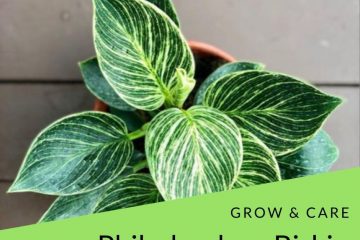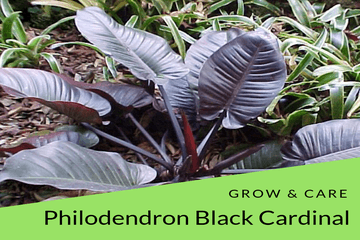
Philodendron Imperial Green comes from the Arum family and has its roots in the South American rainforests. Philodendron Imperial Green is prized for its large, smooth green leaves that fan out in all directions. In short looking quite spectacular on display.
Imperial Green begins with long light-green oval leaves . moreover its growth quite compact within the pot. When the plant develops the smaller leaves at the base of the plant. As a results it will fall away to expose a sturdy stem. The stem system lengthens and grows to ultimately support large lush lime-green rounded leaves. consequently that will create a jungle feel complementary to any home setting
It is very similar to Philodendron Imperial Red, Philodendron Prince Of Orange and Philodendron Congo.
Philodendron plants are traditionally tropical rain-forest dwellers. We can usually found philodendron on the ground which is why it will tolerate partial shade. Apart from that It like warm like our moist home environment. Hence philodendron will be happy when humidity is above 50-60%.
If humidity is too low, you may see the leaf edges starting to curl, and brown tips. Therefore leaf edges may develop. The best way to prevent this is to monitor the humidity levels in your home, and manually adjust them. use a digital hygrometer to keep an eye on humidity levels for your philodendron.
Tips to grow philo imperial green
| POTTING MIX Philodendrons do best in loose, well-drained soil that is high in organic matter. They will grow in 100% sphagnum peat moss. Soilless mixtures such as peat-vermiculite or peat-perlite are also satisfactory. |
| WATER When growing philodendron plants, allow the top inch of soil to dry out between waterings. The length of your index finger to the first knuckle is about an inch, so inserting your finger into the soil is a good way to check the moisture level. Droopy leaves can mean that the plant is getting too much or not enough water. But the leaves recover quickly when you correct the watering schedule. |
| SUNLIGHT Set the Philodendron in a location with bright, indirect sunlight. Find a position near a window where the sun’s rays never actually touch the foliage. While it’s normal for older leaves to yellow, if this happens to several leaves at the same time, the plant may be getting too much light. On the other hand, if the stems are long and leggy with several inches between leaves, the plant probably isn’t getting enough light |
| FERTILIZER Feed philodendron houseplants with a balanced liquid foliage houseplant fertilizer that contains macro-nutrients. Water the plant with the fertilizer monthly in spring and summer and every six to eight weeks in fall and winter. Slow growth and small leaf size is the plant’s way of telling you that it isn’t getting enough fertilizer. Pale new leaves usually indicate that the plant isn’t getting enough calcium and magnesium, which are essential micro-nutrients for philodendrons. |
| TEMPERATURE The ideal temperature for a philodendron is between 65 – 78°F during the day, and around 60°F at night. |
| TOXICITY Philodendron should not be consumed by animals or humans. Lacy tree philodendrons are toxic to cats and dogs. Being educated on poisonous plants can help you avoid any accidents all the while enjoying your greenery. |
| PEST PROBLEMS Philodendron are not prone to insects, but you may encounter aphids and mealybugs. You can wipe off mealybugs with cotton balls dipped in rubbing alcohol. Periodically showering the plant with water and applying insecticidal soap will help keep pests at bay. |
How to Fertilize Philodendron Imperial Green?

Fertilizer is a crucial element of growing a healthy Imperial Green,however it’s important not to overdo it. you can use a balanced liquid fertilizer during the spring and summer growth period
There are many other options for fertilizing your Philodendron Imperial Green. For example you can use a synthetic fertilizer or organic fertilizer. Seaweed extract in particular is an excellent choice for your philodendron
In addition you can add about 10% compost or worm castings to the potting mix when repotting. This normally provides sufficient nutrients for 1-2 years.
must read: the best fertilizer for philodendron
Philo Imperial Love Humidity?
Philodendron Imperial Green is more tolerant of low humidity than many other houseplants. If you want to create optimal conditions for your Philodendron Imperial Green, aim for 40-60% humidity. The minimum 70-90% is fantastic and you’ll see larger leaves. However you only can achieved in plant rooms or conservatories where lots of plants are grouped together
must read: Tips to increase humidity around your philodendron plant
If humidity is too low, you may see the leaf edges starting to curl, and brown tips and leaf edges may develop. A small hygrometer can help you determine the humidity level if you want precision
pruning philo imperial green
Philodendron Imperial Green care does not involve a lot of pruning. The only time you should prune your Imperial Green is when there are diseased or damaged leaves present.Leaves that are not looking healthy should be pruned to focus the plant’s energy on new growth. Unlike vining varieties, this self-heading beauty doesn’t grow out of control if not tended to regularly
must read: How to prune philodendron?



0 Comments